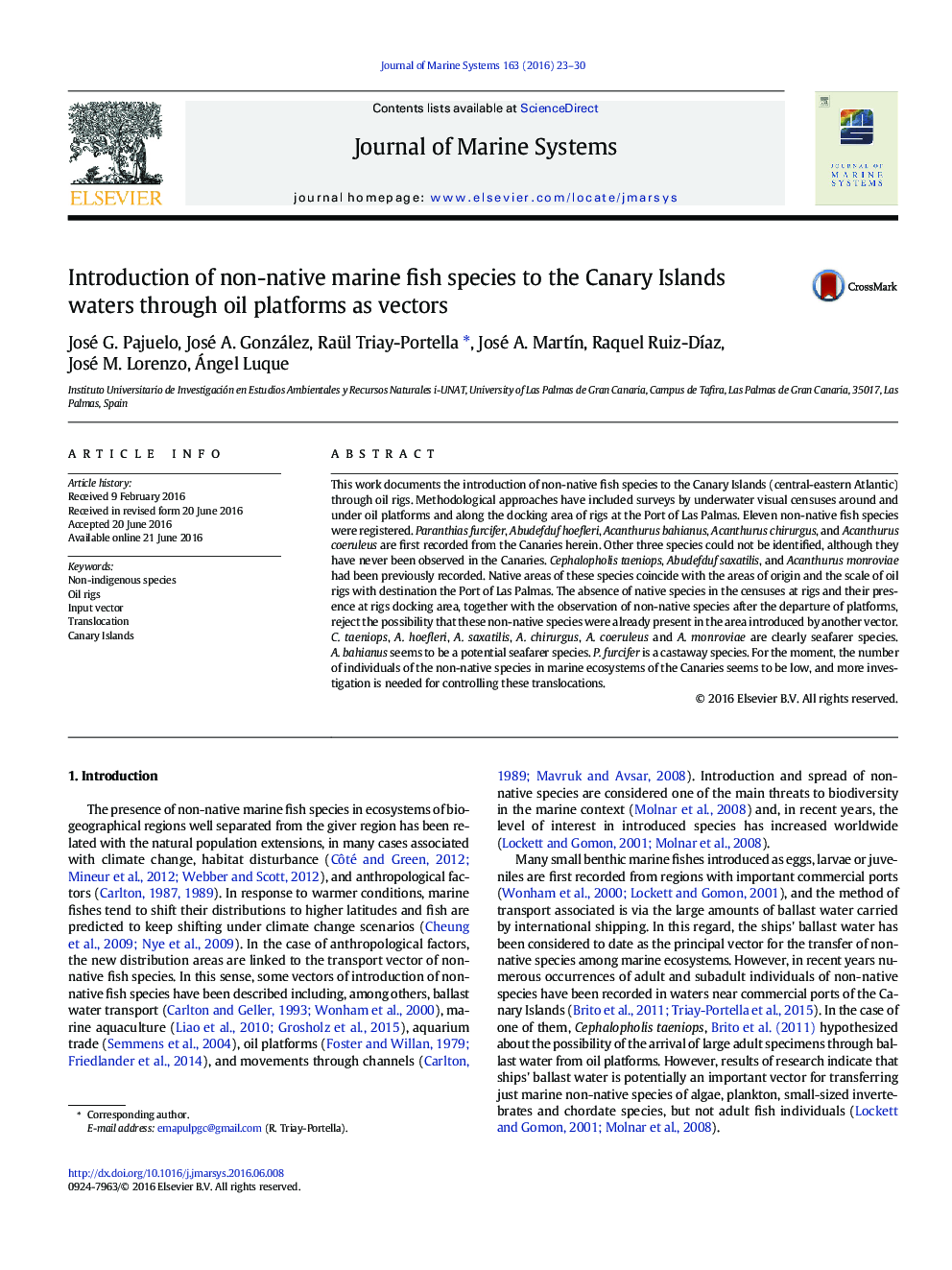| Article ID | Journal | Published Year | Pages | File Type |
|---|---|---|---|---|
| 6386616 | Journal of Marine Systems | 2016 | 8 Pages |
â¢Oil platforms are a very important vector for the translocation and introduction of non-native fish species.â¢Eleven non-indigenous fish species are registered; eight of them are assessed as seafarer or castaway species.â¢Supposedly native distribution areas of these species coincide with the origin and the scale of oil rigs with destination the Port of Las Palmas.â¢Information gathered and methodologies applied will constitute a true baseline for international collaborative projects.
This work documents the introduction of non-native fish species to the Canary Islands (central-eastern Atlantic) through oil rigs. Methodological approaches have included surveys by underwater visual censuses around and under oil platforms and along the docking area of rigs at the Port of Las Palmas. Eleven non-native fish species were registered. Paranthias furcifer, Abudefduf hoefleri, Acanthurus bahianus, Acanthurus chirurgus, and Acanthurus coeruleus are first recorded from the Canaries herein. Other three species could not be identified, although they have never been observed in the Canaries. Cephalopholis taeniops, Abudefduf saxatilis, and Acanthurus monroviae had been previously recorded. Native areas of these species coincide with the areas of origin and the scale of oil rigs with destination the Port of Las Palmas. The absence of native species in the censuses at rigs and their presence at rigs docking area, together with the observation of non-native species after the departure of platforms, reject the possibility that these non-native species were already present in the area introduced by another vector. C. taeniops, A. hoefleri, A. saxatilis, A. chirurgus, A. coeruleus and A. monroviae are clearly seafarer species. A. bahianus seems to be a potential seafarer species. P. furcifer is a castaway species. For the moment, the number of individuals of the non-native species in marine ecosystems of the Canaries seems to be low, and more investigation is needed for controlling these translocations.
